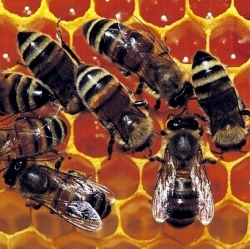
Venom from scorpions or honeybees sounds like it wouldn’t do a person much good. But by directing a modified component just to tumors, researchers might leverage it into a drug. Peptides in some venoms bind to cancer cells and block tumor growth and spread. But they have not yet been developed successfully as anticancer agents because they attack healthy cells too.
Bioengineer Dipanjan Pan and coworkers at the University of Illinois, Urbana-Champaign, are now using polymeric nanoparticles to deliver venom toxin directly to cancer cells. Postdoc Santosh K. Misra discussed the work in a session in the Division of Colloid & Surface Chemistry at the American Chemical Society national meeting last week in San Francisco. And Pan, Misra, postdoc Mao Ye, and grad student Sumin Kim reported on it in a paper last month. “To the best of my knowledge, a rational approach to develop a delivery system for venom toxin” has not been tried before, Pan told C&EN.
The researchers inserted a derivative of TsAP-1, a toxin peptide from scorpion venom, into spherical polymeric nanoparticles, creating constructs they call NanoVenin. When they used NanoVenin to treat cancerous tissue in the lab, it spared red blood cells (erythrocytes) and other normal cells and killed cancer cells with a potency nearly 10 times that of the toxin alone.
